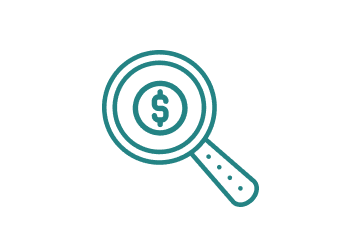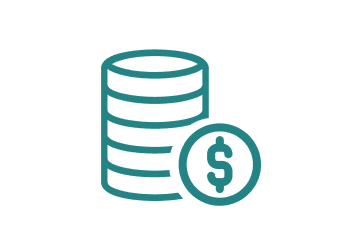Your gut reaction to the ASC 842 Lease Accounting Standard may be to think it’s for the other party—those that lease real estate, vehicles or equipment to others. However, the greater impact is on the lessee doing the borrowing, rather than the lessor. Any contracts signed where you’re using another company’s property with the expectation of returning it or buying it at the end of the contract term will fall under the new standard.
At a high level, operating lease obligations that are included in footnotes will now need to also be recorded as assets and obligations on your balance sheet. As is often the case, when you begin to assess the scope of the project and its impact, you’re sure to find that the devil will be in the details.
In June 2020, the Financial Accounting Standards Board (FASB) gave private companies a temporary reprieve in implementing ASC 842, the updated standard for Lease Accounting. The extended deadlines are now approaching: Businesses that use a calendar year basis for their fiscal year need to be ready by the January 1, 2022, effective date. Those that end their years at any other point need to comply by the first reporting period after their 2022 year-end.
Project Planning
Before heading full-force into having your team dissect lease agreements, it’s best to tackle this in the same manner you would use in launching a new product or service. Document your thoughts, concerns and knowledge gaps throughout.
- Review the FASB Lease Accounting Standard (ASC 842). FASB provides a nice overview of the core principles of the standard and its intent to provide financial statement users with a clearer understanding of financial obligations. The American Institute for Certified Public Accountants (AICPA) also offers a quick overview and 3-minute video.
- With ASC 842, companies will need to identify and extrapolate data from all their leases of property, plant and equipment (PP&E) before creating journal entries that document their Right-to-Use assets and the associated lease obligations. What isn’t called out in these overviews are two potential tripping points—dealing with service contracts that have embedded equipment leases within them and measuring lease liabilities. Both discount rates and valuations must be considered.
- Identify the financial stakeholders. Shareholders, lenders, investors and others that rely on financial statements (including the IRS) are on the list. Performance-based compensation programs that rely on financial metrics should be noted. Calculations may need to be adjusted if post-implementation numbers will no longer incentivize as intended.
- Create a project team. Commit a person or team to do the legwork of culling through the dozens of data fields in the lease agreements that need to be captured. Ensure IT, Treasury and Contract Management are queued up for when their expertise is needed. Designate a point person for making decisions throughout the project.
- Determine the base timeline. Work backward from your deadline. This is one standard where you don’t want to underestimate the potential time commitment needed.
Scope Assessment
Allocate at least a few days or weeks to assess the types of leases you have, their volume and any known complications. You will also need to determine the fair market value and remaining economic life on your leased assets.
- Beyond copiers and computers, do you have any vehicles or services contracts with potential lease components?
- Within your lease contracts, are there guarantees, options to renew early, or incentives or other allowances that will need to be considered?
- Are there any foreign holdings where IFRS 16 and currency conversions may need to be considered?
- Have you received any COVID-19 pandemic–related abatements or taken the opportunity to defer any payments?
- Would any of your lease valuations be affected by the economic impact of the pandemic?
Once you’ve completed this high level pass, update the timeline if needed.
Strategy, Resources and Goals
Determine your strategy and work out the logistics of implementing the new lease accounting standard. Weigh the skill sets and bandwidth of your team, consider bringing in an SME, and take time to evaluate your corporate priorities.
- Short-term or long-term: Decide whether to aim for expediency or an integrated, centralized solution. If you want both, are you able to commit the resources needed for the project?
- Existing data: Review A/P records to find additional leases or contracts. Leverage audit feedback regarding footnote disclosures.
- Collection system: A spreadsheet may work fine if you only have a handful of contracts, but a connected database may be warranted for an extensive lease portfolio. With more than a handful of complex lease agreements, you may benefit from using cloud-based software to track the valuations, discount rates, and data elements, and you may choose to manually post monthly journal entries.
- Related gains: Since resources are being committed to complying with the new lease accounting standard, what other operating efficiencies or insights can you gain while completing through this process?
- As contracts are reviewed, make sure that there’s a spotlight out for any rebates or incentives that haven’t been captured.
- Formalizing your Lease vs. Buy process will make this type of review more consistent (if it’s occurring at all) and may reduce your overall expenses if you find that you’ve been consistently retaining assets beyond lease terms.
- Contracts are often renewed automatically without review. While capturing the data for complying with the standard, add a calendar task to evaluate contracts 90 days prior to their end dates.
ASC 842 Implementation and Maintenance
The process of the gathering data to comply with the new lease accounting standards will hit a number of hurdles. You will need to continually make decisions as you work to standardize the lease data into spreadsheets or software. Contract language is notoriously varied and is often subject to interpretation.
- Contracts may begin one day and be adjusted mid-month, mid-term a few days later. Decide how to capture modifications and tie them to the original contract.
- Service contracts can have multiple machines with different lifespans. You’ll need to value and allocate the expenses between the service and each individual unit.
- Is there potential for your company to go public? Understand that if a risk-free rate is used, financial statements may need to be restated using Incremental Borrowing Rates (IBR) before that happens.
Be diligent with your documentation. Record your assumptions, interpretations and methodology for calculating estimates. Write process and procedure documents during the implementation process. It can be used to train successors while providing audit support.
Next Steps for Compliance
Lease accounting can become very complex, very quickly. Knowing what needs to be done, understanding the implications of decisions, and efficiently using tools and resources during the ASC 842 implementation process will give you confidence to maintain your lease accounting process post-adoption.
If you have an expansive lease portfolio but your current team doesn’t currently have the expertise to make informed decisions about implementing ASC 842, working with a subject matter expert to do a deep dive into it may be the best course of action. To prepare your team for the long-term, they can also help train and develop this core competency within your organization.
If leasing isn’t a key element in your business and your team is lean, consider project-based or fractional support to assess your position, develop an implementation plan or help you throughout the compliance process. A flexible solution that provides accounting standards expertise will ease your adoption angst and put the project behind you in no time.








